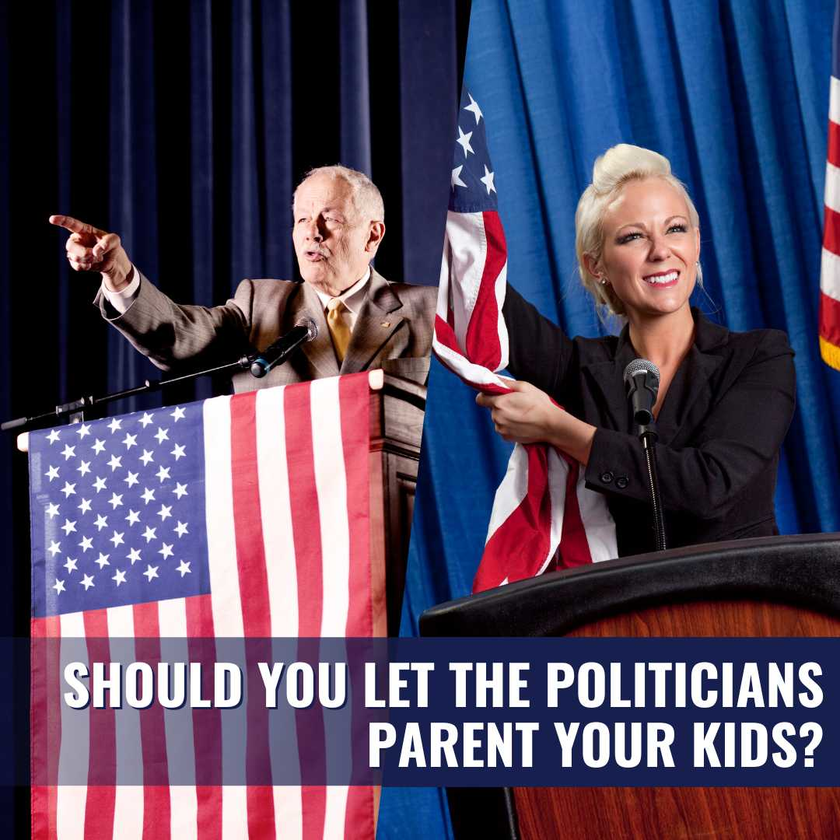
The Trouble With Voting
Some might argue that the state itself should try to instill behavioral norms in children. We need not forcibly take children from their parents: just provide a combination of taxes and subsidies that will induce mothers to conclude that paid employment for themselves and day-care for their children makes the most financial sense. Then people would leave their children at state-run day-care centers, staffed by state employees trained to teach cooperation, and to enhance attachment. This scenario might have some appeal if we assume that our particular brand of state-provided day-care would actually be provided. But if we make the more realistic assumption that details of the day-care would be worked out by some political process of voting, or political give-and-take, the appeal quickly fades. Set aside the knowledge problem I alluded to earlier. Overlook the difficulties inherent in trying to create a system that would actually accommodate the needs of each and every child. Just focus on the fact that a government-run program for creating attachment and teaching appropriate cooperative behavior must make political decisions about how to accomplish these objectives.
For instance, teaching cooperation might mean eliminating all competitive aspects of the children’s interactions. Or teaching cooperation could just as easily include a substantial component of aggressive team sports in which winning requires teamwork. Families routinely makes these judge- ments for each of their children. It is not uncommon for a family to decide that one child would be devastated by contact sports and should go out for the swim team, while another needs football with a former drill sergeant for a coach. This individual adaptation is less likely to take place if a society tries to determine moral and developmental curriculum through voting.
Let us rule out a couple of relatively unlikely cases. We can safely rule out the case in which everyone in America shares the same views about children’s behavior, relationships between children and parents, and the appropriate way to teach cooperation. That kind of consensus is not likely to emerge any time soon. We can also rule out, at least for the sake of argument, the case in which one group successfully and completely dominates the policy making process. We each have our own private nightmare: maybe your worst fear is that the Christian Coalition would select the moral curriculum; maybe you wake up with cold chills from a dream that Hillary Clinton and the Children’s Defense Fund have taken over public schools, after-school programs, and preschool day-care centers. Let us instead offer the democratic process the most favorable set of assumptions and examine a situation with genuine voting among groups of people with different views. Suppose a political entity assigns itself the primary responsibility for inculcating appropriate social behavior and attitudes in young people. What is the likely outcome?
Political scientists and economists have studied majority rule voting rather thoroughly and have learned that decisions made by majority rule often have the undesirable properties of instability and arbitrariness. These properties can arise if no one policy can beat every other policy in pair-wise majority rule voting.
For instance, policy a might beat policy b, while policy b might beat policy c. But instead of a beating policy c, as one might expect, policy c can actually beat policy a. When this happens, the results of the election will be arbitrary, because the outcome will depend on procedural rules rather than on the preferences of the people. The results can be incoherent because mutually contradictory policies can emerge from a logroll (“I’ll vote for your program if you’ll vote for mine”). And the policy outcomes can be unstable as the voters rotate through the set of possible majority coalitions.4 Each vote is a fair majority rule vote. But the outcome of the series of elections does not represent anything like “the will of the people” since there was no unified will of the people avail- able to be expressed in these preferences.
When, during the 1950s, political scientists and economists began discussing the problem of voting inconsistencies, they were unsure about how important they were as a practical matter. After all, voters do not appear to cycle endlessly through a set of proposals. Democratic assemblies do ultimately make decisions that have some stability. Are voting inconsistencies merely a chalkboard trick? The appar- ent deadlock can often be broken by the use of procedural rules. For instance, many democratic bodies have a rule against reintroducing a defeated motion. This rule breaks the endless cycle of alternatives, but it makes the outcome depend entirely upon the order in which the proposals are considered.
When the procedural rules are the decisive factor, the person who controls the agenda and the order of consideration can determine the outcome. In theory, the agenda setter always wins. In practice, he does not. Nevertheless, he has a substantial enough advantage that political parties expend enormous energy attempting to capture positions, such as committee chairmanships and the speakership of the House, that control the legislative agenda.
An election can reveal a consensus if one exists, but an election cannot create a consensus. In fact, the electoral process will only highlight the divisions among the groups. Elections can exacerbate existing differences because people will not sit by idly while their deepest beliefs and strongest preferences are trampled upon by the majority. Instead, defeated voters will find some way to attach themselves to a different coalition that will give them a better result. The trouble with majority rule is not that it oppresses minorities. The deep problem is that there is always a dissatisfied majority that can form around a new, if slightly different proposal. The losers look around for a part of the winning coalition that they can siphon off to form a new majority for a slightly different proposal. Perhaps the new proposal incorporates features of the winning proposal (which is now the status quo) with some other feature that makes it less objectionable to those who were first defeated.
The only constant feature of an issue like this is change. The legislators will be unable to leave the system alone. One dissatisfied group after another will put together a slightly different coalition to promote a new wrinkle in the law. Every year will see a new reform or improvement or at least amendment. Considering how often we have seen “education reforms” or “tax reforms,” this kind of realigning of coalitions probably takes place more readily than we might think from simply looking broadly at the party platforms or ideological orientations of legislators.
Instability is costly and inefficient in tax law. But tax accountants and tax lawyers are grown-up people who plan for a certain amount of uncertainty and change. Young people, however, have a need for some stability in the moral messages they receive, in the programs they participate in, and in the rules they are expected to obey. The instability itself can seriously undermine the government’s efforts to inculcate ethics in the young. This is especially pernicious if the message we are trying to convey to the young is that certain standards of behavior are universal and timeless. In short, an electoral process cannot produce moral consensus if one does not already exist. The cultural and educational processes that might make such a consensus possible must take place prior to the actual election.
This is an exceprt from Love and Economics, by Dr. Jennifer Roback Morse. You can get your copy here: https://ruthinstitute.org/product/love-and-economics-it-takes-a-family-to-raise-a-village/



















